#native Ontario plant species
Text
Native Plants in Canada and Nurseries that Carry Them
Time to open my first box of new plants this year! :D
For those who would like to buy native plants for your own garden, check out the USDA site, which will show you what regions a given plant species is native to. I use it often when I find a species I’m curious about and have added many plants to my personal wishlist this way.
Just use the “basic search” on the right. Keep in mind though that the spelling of the species name has to be exact or no results will come up. Sometimes there’s disagreement on whether a species name ends in “us” “a” “is” or “um” so I sometimes just search for the genus name and go through the list that comes up to find the species.
These are the places I order from (I am in Ontario, but many of them ship elsewhere in Canada):
ALCLA Native Plants - First time ordering! They’re in Alberta but will ship elsewhere and carry a wide selection of plants, a number of which include Ontario in their natural range as well as Alberta, and some of which I haven’t found available anywhere else.
Bamboo Plants - They’re in Ontario but will ship elsewhere. They do not specialize in native plants but they do carry a number, including things like squashberry (Viburnum edule), which is very difficult to find anywhere else.
Botanus - They’re in British Columbia but will ship elsewhere. They do not specialize in native plants but they carry a few species and the ones I got were healthy. Worth giving a try.
Connon Nursery - They don’t ship, but they do have several locations in Ontario and possibly elsewhere. They don’t specialize in native plants but they do carry a large number of them. Definitely worth checking out if you drive or can get a ride.
Hidden Habitat - They don’t ship anymore, but do local delivery in their area of Ontario and offer pickups. They’re about an hour and 45 minutes away from Toronto so if you live in the GTA and can get a ride, it would be worth checking out. They have witch’s hobblebush (Viburnum lantanoides) and partridgeberry (Mitchella repens), which are hard to find anywhere else.
Hortico - First time ordering! They ship across Canada as far as I know. They don’t specialize in native plants but have a huge selection, including some that are hard to find elsewhere, such as squirrel corn (Dicentra canadensis) and fairy spuds (Claytonia virginica).
Lacewing - First time ordering! Located in the GTA. They don’t ship, sadly but if you live close to the GTA maybe you can get a ride over. So far they’re the only nursery I’ve been able to find that carries horseflyweed (Baptisia tinctoria).
Native Plants in Claremont - They only ship in multiples of 6 (and I think only in Ontario) and the plant selection they offer for that isn’t huge (but definitely worth looking at if you’re just starting out). However, their location isn’t terribly far from Toronto, so if you can get a ride out there, the selection is much wider and includes some hard to find species.
Native Plant Nurseries - First time ordering! They’ll deliver within the GTA with a minimum order between $50 and $75 (not hard to reach if you’re really trying to fill a space) and a delivery fee as well. It’s possibly less if you’re closer to their location. Very nice selection and some hard to find species such as white lettuce (Nabalus alba) and purple prairie clover (Dalea purpurea).
North American Native Plant Society - First time ordering! They have a few locations and each location as I understand it has a single day to pick up in the spring. If you become a member you can pre-order plants that you pick up that day as well. They have a large number of species, some which are very hard to find, and if you become a member they offer seed exchanges.
Nutcracker Nursery - They’re in Quebec but ship elsewhere. They carry trees and bushes which they ship bare root wrapped in clay and paper for moisture. They don’t specialize in native plants, but carry a number and are thus far the only nursery I know of that carries native burning bush (Euonymus atropurpureus). Your standard burning bush (Euonymus alatus) found in most garden centres is not native and is invasive in some areas, which makes getting my hands on E. atropurpureus a priority for me, but sadly it’s not available yet this year. Hopefully soon though!
Ontario Native Plants - They only ship in Ontario, and only in multiples of 4. They have a nice selection and every year they try out a new and hard to find species. If you’re looking for appearance and aren’t specializing in edibility, I would highly recommend their new rock harlequin (Corydalis sempervirens).
Origin Native Plants - First time ordering! They’re in Ontario, not sure if they ship elsewhere. I think their minimum is 10 plants. They have a number of hard to find species, including Canada lily (Lilium canadense), wild yam (Dioscorea villosa/quaternata), and wild basil (Clinopodium vulgare).
Paramount Nursery - They have locations in Toronto, Ottawa, and Montreal, so if you live close to any of these areas you can get a free delivery with a $100 minimum order. They don’t specialize in native plants but carry a large number, including Canada buffalo berry (Shepherdia canadensis), and bog rosemary (Andromeda polifolia).
Phoenix Perennials - They’re in British Columbia but ship Canada-wide as far as I know. They don’t specialize in native plants but have a large number, including some extremely hard to find species such as green dragon (Arisaema dracontium). They ship potted plants that they feel have grown hardy enough to survive a long trip, but there’s a greater chance of plant damage.
Prairie Originals - They’re in Manitoba and will ship elsewhere but not every year (sadly not this year). They specialize in plants native to Manitoba but many of these are native to Ontario as well. They carry a wide selection, and yes that includes some that are hard to find anywhere else.
The Pond Experts - First time ordering! They ship Canada-wide as far as I know. They don’t specialize in native plants but carry some native species, several of which are very difficult to find elsewhere, such as pickerelweed (Pontederia cordata) and duck potato (Sagittaria latifolia). As many of the plants they carry are marginal plants rather than floating ones, you don’t need a pond for them, just make sure the area you put them in has poor drainage and isn’t shielded from rain. And water them extra when watering your garden. If possible, put them next to the downspout of the eavestrough.
Wild About Flowers - They’re in Alberta but ship Canada-wide as far as I know. They specialize in plants native to Alberta but many of these are native to Ontario as well. Their minimum is 8 plugs, and they’re also teamed up with Wright Nursery which is more trees and bushes and requires a minimum of 8 plugs as well.
For shipped plants, please don’t hold it against the nursery if some of them don’t make it through the journey. They’re all trying their best to make sure you get plants that will survive in your garden:
Bare root bushes are easier to stack in a long box which reduces chance of damage. It’s also very easy to dig a hole to plant them in and there’s no chance of them being root-bound. If, however, they run out of moisture on the way, they might not make it. Alternatively, being packed in clay and paper they might develop mould, which will kill them.
Plugs are extremely easy to plant, especially if you want to plant in a small space. They’re young that being mildly root bound won’t be a huge problem. They’re unlikely to be damaged in transit. However, because they’re so young and in such a small amount of soil, they can run out of moisture quickly, or perish without the sunlight. It’s also easier to mix up the species. For example, young goldenrods and asters can look very similar.
Potted plants have begun to establish themselves and so are much better able to handle a couple days without water or a week without sunlight. However, there’s a non-zero chance they’ll be extremely root-bound, which may kill them even after you’ve planted them. And it’s easier for them to get damaged in transit.
As you can see, there are benefits and drawbacks to each method, and this is reason some nurseries won’t ship live plants at all. I for one, not having a car, am grateful for those that do.
Now...to find out what’s in my box (from Hortico)!
#native North American species#native Canadian plants#native Ontario plant species#native Canadian plant nurseries#list of nurseries selling native Ontario plants#gardening#native garden
25 notes
·
View notes
Text
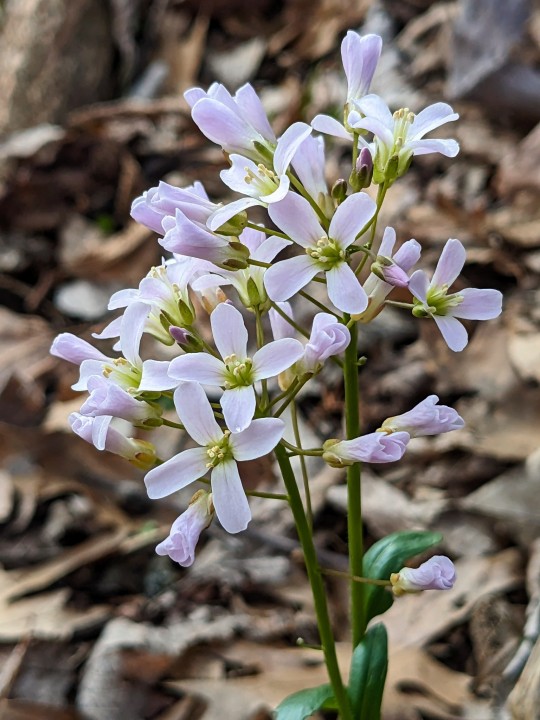

Purple Cress
Cardamine douglassii
Also known as Limestone Cress, this species in the mustard family features clusters of light purple flowers in early spring and can be found in wet and swampy forests with calcium carbonate rich soils. It's native to parts of the eastern United States and southern Ontario, Canada.
The plants I photographed are part of an isolated population remaining in a tiny bottomland forest remnant in St. Charles County, Missouri. Unfortunately, the rest of the forest has been lost due to suburban sprawl and what little of it remains has many invasive species, including winter creeper, callery pear, and japanese honeysuckle trying to encroach from surrounding developments and outcompete native plants like this one.
March 12th & 13th, 2024
St. Charles County, Missouri, USA
Olivia R. Myers
@oliviarosaline
#botany#cardamine douglassii#cardamine#purple cress#bittercress#brassicaceae#nature#naturecore#forest#fairycore#woods#missouri#native plants#native flowers#forests#hiking missouri#suburban sprawl#urban sprawl#ecology#plants#flowers#wildflowers#purple flowers#native plants of america#forest floor#bottomland woods#bottomland forests#nature photography#flower photography#spring
36 notes
·
View notes
Text
Blog 1: Connected to Nature
Hello, ENVS*3000 friends! I'm Maia, and I am in my third year of Biological Sciences. Welcome to my first blog :)
I would describe my current connection with nature as a profound yet carefree essence. I come from the city, more precisely, North Toronto; I found myself yearning for nature's embrace from a young age, perhaps triggered by its scarcity in my urban surroundings. Recognizing my affinity, my dad, a nature enthusiast, actively fueled my passion through camping adventures, hiking escapades, and shared moments immersed in captivating David Attenborough documentaries. In the midst of a large Italian family, where the majority remained indifferent to the natural world, I stood out as the quiet one, the nature lover, aspiring Dr.-to-be. Amidst this, my dad became my reliable support, sharing the same passion for the great outdoors. His passion for wildlife and landscape photography became a shared pursuit, complete with my very own camera.

Photo of a male wood duck shot by Dino Melissa
Despite a bustling upbringing as a competitive dancer for 17 years—which is not exactly an outdoor sport—I surrounded myself with nature books, my dad's photographs, and nature documentaries. Unfortunately, while balancing a hectic city life, the opportunities for my dad and I’s outdoor adventures diminished over the years. However, as I am maturing and expanding my knowledge, I continuously discovered new ways to appreciate nature and its interconnected web of life - not mosquitoes though…
In my quest to inspire others to view nature through a similar lens as I do, I spent the past summer at a wildlife hospital, manning the front desk. Handling cases ranging from fallen hawks to orphaned baby raccoons to pigeons with string around their feet, I strived to educate callers about wildlife while debunking misconceptions. Some common ones are that pigeons are dirty and will give us diseases, and snakes are evil - spoiler alert, both are very wrong! While not everyone appreciated or grasped the educational aspect—some mistaking us for pest removal—many left with a newfound understanding of Ontario's wildlife. Small changes, after all, contribute to a broader impact of protecting our native species. This job expanded my knowledge - which I still try to share with anyone who will listen - and played a pivotal role in further evolving my relationship with nature.
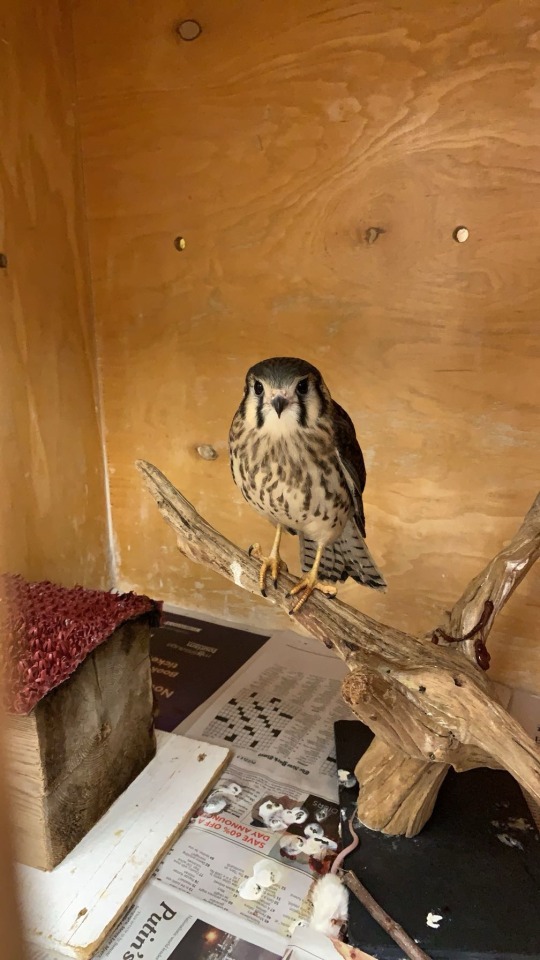
Picture of an American Kestrel
One place that has bestowed upon me a profound sense of place is my cottage—a haven of tranquillity like no other. Nestled on about an acre of land, backing onto a forest, it teems with diverse wildlife such as deer, coyotes, foxes, turkeys, grouse, and a plethora of native plants. Whether quietly observing the tree line or engaging in summer activities like kayaking and hiking, the ambient sounds of water, wind, and nature's symphony create a genuine sense of place; whenever I am there I feel as if I belong there. It's here that I yearn to escape city living permanently, trading it for the allure of a rural plot of land to live off of sustainably.

Picture of the backyard during the winter
The dream of owning a small farm and caring for animals has been a lifelong goal of mine. The charm of sustainable living intertwines with my passion for nature; here is where I hope to coexist in harmony. Through responsible practices and a deep connection with nature, I aim to contribute to the preservation of the natural world, all while feeling a permanent sense of place like no other.
21 notes
·
View notes
Text
Scientists use a refrain to sum up in the impact of earthworms [...]: “Good in your garden, bad in the forest.” It’s a quip that can sometimes come as a surprise to people used to thinking of earthworms as symptoms of healthy soil.
In Canada’s northern forests, there’s increasing evidence of a worm problem.
According to research from 2013, tiny soil invertebrates, like mites and springtails, decrease in abundance by more than 50 percent when earthworms are present. These minute creatures play an important role in the decomposition and nutrient-cycling of plants, and their decline can likely be attributed to the rapid way earthworms devour leaf litter. [...] And earthworms, it seems, are spreading everywhere. Research on their presence in northern US forests, where invasions are more advanced, suggests that they could have cascading effects including everything from more severe drought to greater human allergies. [...]
[N]early all native species of earthworms in Canada were wiped out over 12,000 years ago, during the last period of glaciation. Earthworms, we now know, have been present in southern Canada for only a few short centuries, the first having hitched a ride with colonizing Europeans [...].
---
Lumbricus terrestris -- the common earthworms people find in their gardens, which are often called dew worms or Canadian nightcrawlers in fishing circles -- are one of the worm species that were transported from Europe and have settled into their new home so successfully that they’ve emerged as a valuable commodity. According to Steckley’s later research on the subject, demand for these worms as fishing bait exploded as recreational fishing became popular in the wake of the Second World War. But earthworms defy attempts at commercial cultivation and have to be plucked from the wild.
In the 1980s, southwestern Ontario, with its rich soil, abundant volume of introduced nightcrawlers, and steady supply of immigrant labour, quickly eclipsed the other worm-producing regions of North America. By the time Steckley drove past the worm pickers,
Ontario had become the epicentre of global nightcrawler production, with an estimated 500 million to 700 million worms picked and shipped across North America every year.
---
Steckley, who is now a doctoral candidate at the University of Toronto researching Ontario’s bait-worm industry, says that he was actually right about his initial impression: there were bags of money in that farmer’s field, at least in the figurative sense. Worm pickers usually make around $30 per 1,000 worms, and a picker in the right conditions can scoop up to 20,000 worms a night.
“Farmers who rent their land [for an entire year] can make more from worm pickers than any other crop that they feasibly plant,” says Steckley, who’s heard of rents of up to $1,500 an acre. The industry is worth around $230 million today, Steckley estimates.
Despite the spread, Steckley says there have been few efforts to regulate its downstream environmental effects -- in fact, most people he’s encountered have been unaware that earthworms are invasive. [...]
---
But, in the boreal forest, most of the carbon is stored in organic matter -- that thick layer of fallen leaves, roots, moss, and rotting wood that, under normal conditions, decomposes slowly. But deep-burrowing earthworms feed on this material [...]. Justine Lejoly, who is conducting doctoral work with the University of Alberta and the Canadian Forest Service, found that, in some invaded parts of the Canadian boreal, 96 percent of this layer has disappeared. “Most of the forest floor is gone, so that means a lot of carbon is gone,” she says. This finding, which Lejoly made alongside her supervisor Sylvie Quideau is striking because 28 percent of the boreal forest is found in Canada and as much as one-third of terrestrial carbon is stored in the boreal worldwide. [...]
---
Text by: Moira Donovan. “Revenge of the Earthworms.” The Walrus. With illustration by Joey Ng. 13 June 2022. [Bold emphasis and some paragraph breaks added by me.]
106 notes
·
View notes
Text
Turtles of Ontario
Beneath the calm surface of Ontario’s lakes and rivers lives an animal that has occupied the area for longer than any human civilization. But with the changes of the modern world, the ancient turtles of Ontario that once represented protection and longevity are quickly fading from existence. In today’s blog post, I will be exploring my favourite animal, the turtle, and share with you the unfortunate story of how this elder of the animal world has become rare in their native habitats, and how if action is not taken, we may never be able to see them again.
There are eight species of turtle that can call Ontario their home, the most of any Canadian province, each with unique characteristics that set them apart from the others. Turtles are reptiles that belong to the order Testudines, they have hard shells that have developed from their ribs and can hide their heads and limbs within the shell when threatened. Most turtles can be identified based solely on the patterns, size, and shape of their shells. One of the most commonly seen turtles in Ontario is the painted turtle. If you see a bunch of turtles lying on a log or rock, you’ve likely seen a painted turtle! These turtles love basking in the sun near the lakes, ponds, rivers, and wetlands that they live in. They are aquatic, spending most of their time in the water but will travel onto land to migrate, nest, and bask. They have a unique pattern of red stripes on their shells and limbs which can be seen in the picture below (COSEQIC, 2018).

The largest turtle in Ontario is the Snapping turtle, which can grow to 40cm in length! They are known not only for their size but also for their powerful bite, which they get their name from. Although their shells are large, their underside is not well protected, and they cannot fully retract their head and limbs (OTCC, 2023).

Another fascinating species is the Northern Map turtle, which lives in bodies of water in and around the Great Lakes. They get their names from the unique pattern on their shells of intricate lines that resemble that of a topographical map. They also like to bask on logs and other surfaces near the water but are quick to startle and will dive into the water at the slightest movement (OTCC, 2023).
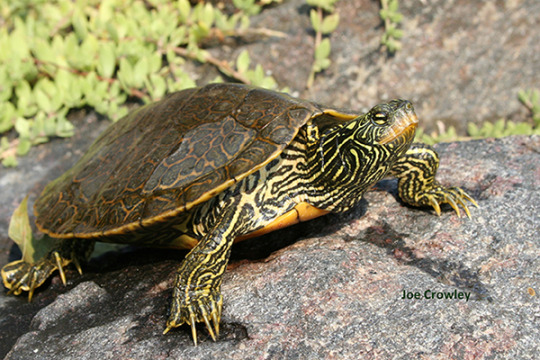
Unfortunately, seven of the eight Ontario species are considered at risk of extinction if steps are not taken to conserve their populations. They all face similar threats from human activities and suffer the most from roadway accidents, loss of habitat, and invasive species (OTCC, 2023). Turtles have long lives but take many years to reach sexual maturity, resulting in low rates of population growth. This combined with increased adult mortality has made population recovery a slow and difficult process. Being able to identify the different species of turtles in Ontario is crucial for reporting and monitoring their populations. There are many citizen science initiatives and reporting turtle sightings is an important step in their conservation. This can be done at the following website, but many others can be found with a quick search: https://www.ontario.ca/page/report-rare-species-animals-and-plants
COSEWIC. (2018). COSEWIC assessment and status report on the Midland Painted Turtle Chrysemys picta marginata and the Eastern Painted Turtle Chrysemys picta picta in Canada. Committee on the Status of Endangered Wildlife in Canada. Ottawa.
OTCC. (2023). Our 8 Native Species Need Our Help! Ontario Turtle Conservation Centre, retrieved from: https://ontarioturtle.ca/turtles/
5 notes
·
View notes
Text


White Sage | Salvia Apiana ❁ཻུ۪۪ ━
‧₊˚. : · •. * • ˚ . · * ✶ : · • * ˚ ✵
In this discussion, we will delve into the fascinating aspects of white sage: its unique properties, natural habitat, and the reasons behind its one-day endangered status and revered significance. The following information is intended purely for educational purposes and is derived from extensive research, including diverse perspectives on the utilization of this herb in various practices. If anything sounds off or sounds incorrect, do not be afraid to let me know, however, please be respectful when pointing something out.


𖤣𖥧˚ Family
"White Sage is a member of the mint family (family Lamiaceae), which includes aromatic herbs or shrubs (rarely trees or vines), usually with stems square in cross-section, four-sided.There are about 200 genera and 3,200 species, distributed nearly worldwide. The Mediterranean region, the chief area of diversity, produces many spices and flavorings, such as various mints, oregano, marjoram, thyme, sage, and basil. Catnip and lavender are in the mint family." - Lady Bird Johnson Wildflower Center

𖤣𖥧˚ Appearance
White sage is a tall, woody shrub that can reach heights of several feet. This sprawling plant typically measures around 3-4 feet in height and 4-5 feet in width. Its distinguishing feature is its long, slender leaves that have a silvery-white colour, which is why it is called white sage. The plant produces small, white or pale lavender flowers on tall spikes during the blooming season.

𖤣𖥧˚ Native Habitat
White sage is native to the southwestern United States and northern Baja, Mexico. It may also be found along the lower edges and in openings of chaparral and oak woodlands. White sage can even be found in Canada under specific conditions. In Canada, white sage can be grown as a perennial herb in regions with similar climates to its native habitats, such as parts of British Columbia or southern Ontario.
White sage is adapted to a Mediterranean climate, which is characterized by mild, wet winters and hot, dry summers. It thrives in areas with long, dry periods and requires plenty of sunlight. The plant is well-suited to sandy or rocky soils and can tolerate drought conditions. It is often found growing in arid or semi-arid regions with low to moderate rainfall.

𖤣𖥧˚ Planet/Sign Associations for Sage
This pertains to sage in a general sense, rather than specifically referring to white sage.
Planet: Jupiter
Sign(s): Sagittarius, Pisces, Gemini, Cancer, Scorpio

𖤣𖥧˚ Properties and Benefits of White Sage
Insect Repellent: The aromatic compounds found in white sage have natural insect-repellent properties. Rubbing or burning dried sage leaves or using white sage essential oils can help repel mosquitoes, flies, and other pests.
Respiratory Support: White sage is often used to address respiratory issues such as colds, coughs, sore throats, and congestion. It is believed to have expectorant properties, helping to loosen mucus and alleviate respiratory discomfort.
Anti-inflammatory Effects: White sage is thought to have anti-inflammatory properties. It may be used topically or in the form of a poultice to soothe skin irritations, insect bites, and minor wounds.
Digestive Aid: White sage has been used to support digestion and relieve gastrointestinal discomfort. It is sometimes consumed as a tea to promote digestive health.
Calming and Relaxing Effects: The aroma of burning white sage is often considered to have a calming and relaxing effect. It is sometimes used for stress reduction and relaxation.

𖤣𖥧˚ Warnings and Precautions
Allergic Reactions: Some individuals may be sensitive or allergic to white sage. If you have known allergies to plants in the Lamiaceae family (such as mint, basil, or oregano), it is advisable to exercise caution when using or being exposed to white sage.
Smoke Inhalation: Burning white sage releases smoke, which can be irritating to the respiratory system, particularly for individuals with asthma, allergies, or other respiratory conditions. Ensure proper ventilation when cleansing or using white sage smoke and be mindful of the amount and duration of exposure.
Pregnancy and Nursing: The safety of using white sage during pregnancy or while breastfeeding has not been extensively studied. It is advisable to consult with a healthcare professional before using white sage in these circumstances.
Skin Sensitivity: Applying white sage directly to the skin may cause irritation or allergic reactions in some individuals. It is recommended to perform a patch test on a small area of skin before applying it more extensively. Discontinue use if any adverse reactions occur.

𖤣𖥧˚ Why White Sage Is At Risk
White sage is primarily at risk due to habitat loss, over-harvesting, and unsustainable collection practices. Native bees heavily rely on white sage as a vital source of sustenance. However, the act of extracting seeds from sage plants by poachers not only disrupts the delicate balance but also leads to a decline in the population of indigenous bee species within the Golden State. The overwhelming majority of white sage items available for purchase have been obtained through poaching. Which means it is not ethically sourced. While white sage isn't endangered, it is in danger of becoming endangered. It's not so much that it is "scarce" but rather it will become so in the future.
Other factors on why white sage is at risk or a bullet-point list to hit major points (a TL;DR):
Unsustainable Collection Practices: Some harvesting practices of white sage involve uprooting the entire plant, which prevents it from regenerating and can lead to population decline. Additionally, unethical or unsustainable collection methods, such as illegal harvesting or removing plants from protected areas, further contribute to the risk of white sage.
Overharvesting: White sage has gained popularity in recent years for its use in smudging rituals, leading to increased demand.
Climate Change: Climate change, with its associated effects like temperature increases, altered precipitation patterns, and more frequent and severe droughts, poses a threat to the survival of white sage.
Lack of Natural Regeneration: White sage has limited natural regeneration capabilities. Its seeds have low germination rates, and the plant relies heavily on specific conditions for successful establishment. With habitat degradation and disturbance, the opportunities for the natural regeneration of white sage are diminished.
Rather than purchasing commercialized white sage, cultivating your own or receiving it as a gift from someone known for ethically sourcing it is the optimal approach to many aspects of this matter. It can be a proactive approach and one that benefits many.

𖤣𖥧˚ What You Can Do to Protect or Preserve White Sage
Cultivate Responsibly: If you have the means and space, consider growing white sage in your garden or on your property. This can help reduce the need for wild harvesting. Ensure you obtain seeds or cuttings from reputable sources to ensure genetic diversity and authenticity.
Spread Awareness: Share your knowledge about white sage and the need for sustainable practices with others. Encourage respectful and responsible approaches to its use and cultivation.
Support Indigenous Communities: Purchase white sage from Indigenous-owned businesses or directly from Indigenous communities that cultivate and sell it sustainably. This supports their traditional practices and livelihoods while ensuring the responsible management of white sage.
Seek Alternatives: Explore alternatives to white sage for spiritual practices and cleansing. There are several other plants, such as rosemary, cedar, eucalyptus, mugwort, green sage, purple sage, lavender, pine, and desert sage that can be used as substitutes.

𖤣𖥧˚ Spiritual and Traditional Significance
The profound spiritual and ancestral meaning of white sage holds great significance in various indigenous cultures, particularly within Native American traditions. Although this herb is not exclusive to indigenous communities, it is the ritualistic practice surrounding it that holds paramount importance.
While smoke cleansing is a practice found across cultures with different plants and herbs, the term "smudging" specifically refers to the Indigenous tradition and should be approached with respect and understanding. To ensure cultural sensitivity and avoid appropriation, it is advisable to educate oneself on how native communities perform this ritual, explore alternative practices, or, if uncertain, simply refrain from incorporating it. In the realm of closed practices, initiation or invitation becomes a vital component, accompanied by a rich tapestry of diverse ceremonies and customs that differ among various tribal communities.
Here are some of the spiritual and traditional practices associated with the use of white sage:
Smudging: The act of smudging is deeply rooted in the cultural traditions of numerous First Nations, the Indigenous and Native American peoples. This ancient practice entails the sacred burning of various medicinal plants obtained from the Earth, such as sweetgrass, sage, tobacco and cedar. By partaking in a smudge, individuals engage in a purifying ritual aimed at dispelling negativity, alleviating anxieties, and transcending any lingering gloom or emotional distress. Ultimately, the purpose is to restore well-being and empower oneself to thrive.
Cleansing Rituals: White sage is often used in various cleansing rituals to purify individuals, living spaces, ceremonial tools, and sacred objects. This can be done by waving the smoke over the body or around the area or object being cleansed, with the intention of removing stagnant or negative energies.
Prayer and Meditation: White sage is sometimes used in prayer and meditation practices to create a sacred and purified space. Burning white sage can be accompanied by prayers, affirmations, or specific intentions, fostering a focused and spiritually receptive state of mind.

Source(s) & Article(s) ❁ཻུ۪۪ ━
‧₊˚. : · •. * • ˚ . · * ✶ : · • * ˚ ✵
Nature Collective's article on White Sage:
Flowers by the Sea's article on White Sage:
National Library of Medicine's article on White Sage:
WebMD's article on sage (not just white sage):
The Canadian Encyclopedia's page on "smudging":
MilkBath's article on smoke cleansing in different parts of the world:
Ya-Native's article on what smudging is and the practices:
Here's a YouTube video where Revolutionary Mystic talks about issues and what to do in terms of supporting Indigenous folks:
youtube
For some reason it says "age-restricted" so if that appears for you, here's the hyperlink: 10 Things Non-Native American folks need to hear (especially spiritual white folks)
#white sage#plants#herbs#sage#lavender#cedar#mugwort#smoke cleansing#indigenous#indigenous people#native american#first nations#witchblr#eclectic witch#beginner witch#witchcraft#spirituality#paganblr#paganism#neopaganism#herbology#natural medicine#research#smudging#chemistry#purple sage#desert sage#awareness#educational#THIS IS TO BRING AWARENESS TO WHITE SAGE
6 notes
·
View notes
Text

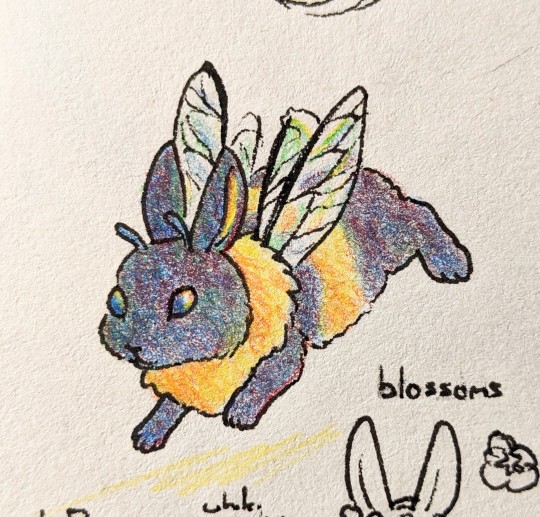

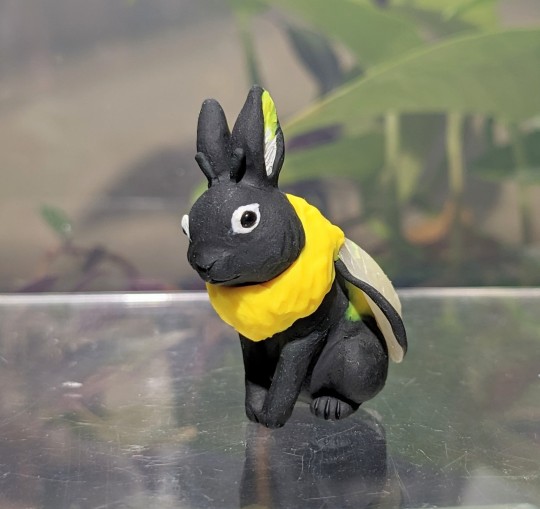
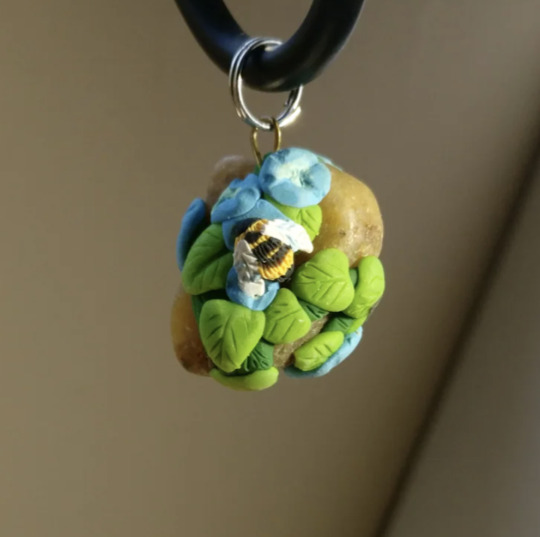

I learned it is again National Bee Day! Bees are one of my absolutely favourite animals, and I love making them. There's been good bee news lately, with some species populations recovering, and general awareness among gardeners who can plant some of the best plants for wild native bees. Good luck bees!
From top, sweater bumblebee, Bunblebee (more of these to come), Bunblebee sculpture, Bumblebee pupper sculpture, bee pendant on beachstone, and Bee scene pendant on sea glass.
Most of these are sold, but the two pendants will be available at Anime North with me at table F08 in Artist Alley (the outer edge!)
Or from the sh 0p until closing on May 24.
9 notes
·
View notes
Text
Unit 02: Teaching Learners
My uncle lives on the shore of Lake Erie and down the road from his house is an arboretum/biodiversity hotspot called Monarch Landing Nature Reserve. My uncle became good friends with the gatekeeper of the reserve and while visiting my uncle in the summer of 2021 we went to the reserve for a tour. The gatekeeper’s name was also Aaron, and he was extremely knowledge about all the species on the reserve. It was host to 230 species of birds, 73 species of butterflies, Carolinian and rare trees, and plants. On the tour Aaron talked about the different species, how they originally came to Canada or if they were native, the status of the species, which species migrated through the reserve, and overall showed me some cool plants.
I do not think that my future employment will involve interpreting nature in this way however I think it would be cool to volunteer to gain the opportunity to teach people about different plants species in Ontario and how to preserve them. This could be volunteering throughout my career or after I retire and just something I do on the side for fun. I want to be able to look at any plant or tree species and know exactly what its scientific name is and then be able to explains its history is a fun imaginative way that will get my audience excited about nature. Ideally this would be performing nature tours at an arboretum to children and adults.
After taking the What’s your learning style quiz I found out that I am a 45% tactile, 40% visual and 15% auditory learner. Meaning I learn best through experiences and seeing. Taking that into account when I interpret nature for others, I need to consider their learning style and incorporate that into my explanation.
If I were to perform tours, I believe the best way to interpret nature to my audience would be through the story line strategy (pg. 100) (Beck et al., 2018). As well Beck et al. (2018) indicates that interpretation should not be just facts but rather acting as a guide to help better the experience providing the flesh and blood (pg. 83). Beck et al. (2018) provides a list of the 15 principles and there corresponding gifts (pg. 85). Depending on the intended audience these principles must be adjusted to represent the material in understanding ways. Such as with the gift of joy programs can be designed to be targeted at adults, children, and a mix of both so when you start a tour it can reach the audience at all levels. Adjusting interpretation to different ages will be important to learn as well. Asking where, what, who questions to children under 2, when and why questions to children 2-7, focusing on concrete experiences for children 7-11, and lastly for children older than 11 incorporating problems will be helpful (pg. 108/109) (Beck et al., 2018).
Another skill to learn would be multiple intelligences to help engage as many people as possible (pg. 110) (Beck et al., 2018). Many of the other theories Beck talks about are important to learn as well. Incorporating these theories into steps to guide the audience through a story line with the main goal in mind. Overall, this will all take time to learn and could take years to masters before you can apply your knowledge to everyone’s learning style.
Aaron
Beck, L., Cable, T. T., & Knudson, D. M. (2018). Interpreting cultural and natural heritage: For A Better World. SAGAMORE Publishing.
5 notes
·
View notes
Text
Starting the Conversation: Nature Interpretation
How would I explain my relationship with nature?
I really strive to make a positive impact on the environment around me so that the relationship I have with nature isn't one-sided. Like many of us in ENVS3000, I am in a program that is more or less based on protecting and preserving the natural world around us, and that really is my goal moving forward after university. My relationship with nature started really young, it took me a while to accept getting dirty and some parts of it used to gross me out (anything that crawled was a no), but learning and exploring quickly grew on me!
I feel grade 5 was a really pivotal moment in my relationship with nature, and was key in offering the beginning moments of discovering my sense of place. There was a program that I heard all the big kids on the playground talk about; they got out of school for three days, got to play outside, and they got these awesome keys which really amazed young Teagan. Sounds like an awesome time, right? But grade 5, my time finally came to find out what this program was about for myself.
This program was called "Earthkeepers", if anyone else went to an elementary school in UGDSB you may have also heard and/or done this, it was unforgettable! The purpose of this program is to immerse students in nature, and have them learn firsthand about the connections everywhere, the relationships, cycles and changes in their surroundings. There were so many cool world-building activities, and the guides talked to us often of this mysterious character known only as E.M.. This person was the keeper of the keys, a mysterious wizard of the woods, and wanted to spread an appreciation for the natural world to everyone. Completing each day awarded us a key, which opened a box in a secret location we had to find. Days were filled with journalling under trees, and being alone with our thoughts to reflect in nature about nature.

So who did offer me a sense of place? After thinking about it, I felt like I really discovered my sense of place. Of course I had guidance from teachers, but Earthkeepers was just the start. I always felt like part of my purpose has been to preserve our world for future generations. I used to always feel anxious learning about global warming, and losing a new species every other week, and we were always told we were the generation of change, we were the last hope. And now in university, studying wildlife biology and conservation, I feel like I've been able to make a difference, a positive impact, and I am starting to make that change.

Now that I'm in university I continue to develop my appreciation and relationship with nature. I started volunteering with Wild Ontario, a program based through the university that uses non-releasable raptors to travel the province and educate people about science, conservation, and human impact on wildlife! I've also lived the tree planter life, planting thousands of native trees and seedlings across southern Ontario for the past two years. And I've also worked at Killbear Provincial park, maintaining the greenspaces that people love to visit every year, and helping protect the species within like the Massasauga Rattlesnake and Eastern Foxsnake.

All of these parts of my life, were critical in making me the person I am today with the values and goals and aspirations that I have today. So many sources of inspiration from people and animals and experiences that I carry with me and hope to inspire someone else with, to foster their own relationships with nature. I hope to learn more about other's experiences through their blogs, and reflect more on how I can further develop myself through this course and my abilities as an interpreter.

2 notes
·
View notes
Text



Winged/Shining Sumac - Rhus Copallina
Sumacs are typically thought of as weedy shrubs. However in nature, they serve as a great incubator for forest regeneration, a pioneer species if you will. Sumac species were used for this purpose to jumpstart forest growth on Pier 1 adjacent to the Brooklyn Bridge, allowing oak saplings to regenerate within the thicket and open canopy.
The winged Sumac is different than other Sumacs because it has pinnately compound leaves (the little leaf on the 'stem' portion). The fruit also droops downward rather than standing erect as well, pictured above as green when immature but ripens a dark red color. The leaves also have a lovely sheen to them that is not poisonous to touch, unlike it's swamp dweller sister "poison sumac" (distinguished by red branches and white berries).
Sumacs are spread via bird droppings so typically are found in heavily disturbed, sandy, rocky but moist locations, think of a road side, cliffs edge, or maritime forest. The specimens above were seen at Sandyhook, they are native to eastern America from mexico to Ontario. This plant usually forms dense crooked stem thickets from a singular root structure when disturbed, they can get to around 20 ft tall, and are a pretty beneficial species for birds and insects.
2 notes
·
View notes
Text
Enhancing Kitchener's Beauty: The Art of Landscape Installation
Nestled within the heart of Ontario, Kitchener boasts a unique blend of urban vibrancy and natural charm. Amidst the hustle and bustle of city life, the allure of well-designed landscapes serves as a tranquil escape. Landscape installation in Kitchener isn't merely about planting trees and shrubs; it's an art form that weaves together nature's elements to create captivating outdoor spaces.
The city's landscape installations are a symphony of creativity and functionality. They harmonize aesthetics with practicality, catering to both visual appeal and environmental sustainability. From public parks to residential neighborhoods, Kitchener's landscapes are a testament to thoughtful design and meticulous planning.
One of the hallmarks of landscape installation in Kitchener is its emphasis on indigenous flora. Native plants are favored for their adaptability to the local climate and their crucial role in supporting biodiversity. These installations prioritize the preservation of indigenous species, fostering ecosystems that thrive naturally without upsetting the ecological balance.
In the heart of the city lies Victoria Park, a picturesque oasis that exemplifies the city's dedication to landscape aesthetics. Here, a harmonious blend of lush greenery, winding pathways, and serene water features invites residents and visitors alike to unwind and connect with nature. The park's landscape design not only enhances its visual appeal but also encourages community engagement, hosting various events and festivals throughout the year.
Moreover, residential areas in Kitchener have witnessed a surge in homeowners investing in landscape installations to elevate their outdoor living spaces. From intricately designed gardens to functional outdoor living areas, these installations reflect individual tastes while contributing to the overall charm of the neighborhood. Professional landscapers in the area work closely with residents, turning their outdoor visions into stunning realities while incorporating sustainable practices.
An essential aspect of landscape installation in Kitchener is its adaptability to changing environmental needs. With a growing focus on sustainability and conservation, these installations integrate eco-friendly features such as rain gardens, permeable pavements, and efficient irrigation systems. Such initiatives not only reduce environmental impact but also promote water conservation and minimize maintenance requirements.
Collaboration between landscape designers, architects, and environmental experts plays a pivotal role in shaping Kitchener's outdoor spaces. Their collective expertise ensures that every installation aligns with the city's vision of creating harmonious, sustainable landscapes that enrich the lives of its residents.
In essence, landscape installation in Kitchener transcends mere aesthetics; it's a testament to the city's commitment to fostering a greener, more inviting environment. These installations serve as living canvases, evolving with time while preserving the essence of nature within an urban landscape. As Kitchener continues to grow and evolve, its landscapes will remain a testament to the city's dedication to creating spaces that inspire, rejuvenate, and connect communities with the beauty of the natural world.
0 notes
Text
Virginia Bluebells (Mertensia virginica)
Blue flowers are relatively rare. Most incline to violet or else are quite small. But Virginia bluebells are a striking exception. All my photos from my garden, unedited.


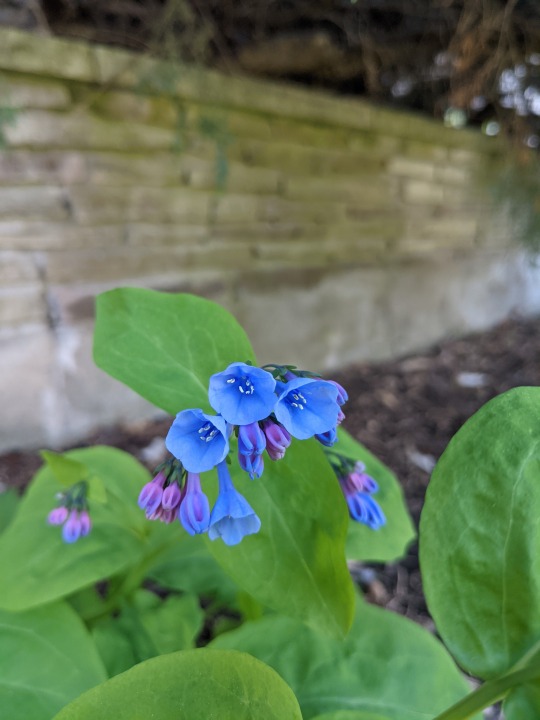



I'm not kidding. They really are that blue naturally. They bloom in May. Then they slowly decline and the entire plants are gone above soil by the summer. Only to reappear the following spring! The shoots and flower buds are edible. You don't want to take too much, though. As spring ephemerals, they need the energy they make with their leaves during their short growing period. The short bloom period is also why I don't have more photos of them. They don't even bloom every year.
#photography#my photos#blackswallowtailbutterfly#Virginia bluebells#Mertensia virginica#flowers#blue flowers#wildflowers#gardening#native species#North American native plants#edible wild plants#my garden#native plants of Ontario and the northeastern USA#spring ephemerals
15 notes
·
View notes
Text
Unit 05: Summer Science Reflections 🌼
Hey fellow interpreters! I don’t know about all of you, but the last couple of weeks have been super busy. Between school, work, extracurriculars, and maintaining a healthy social life, Overwhelming October seems to have snuck up on me (yet again). During this time, fostering my relationship with nature is more crucial than ever. My coursework and extracurriculars are highly environment-focused (which definitely helps), but it’s the time spent in nature for no “productive” purpose that truly maintains my motivation and mental health— lots of laying in the grass, digging around for insects, and sporophyte observing during my seemingly limited spare time.



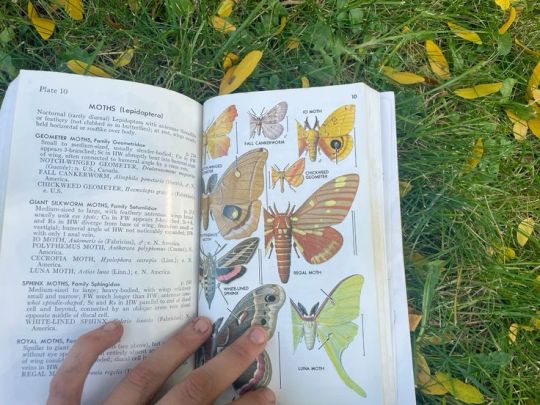
Amongst all of this university chaos, I’ve found myself reflecting on my summer position and all the exciting projects I had the opportunity to work on. My Research Assistant role was divided between two (2) teams, Plant Responses to the Environment & Biological Crop Protection, which meant so much learning across 18 different projects. Since we have no designated prompt this week (but still highlighted nature interpretation through science), I’d like to share two (2) of my favourite experimental and observational projects from the summer!
🌸Orchid Shelf Life Assessment:
The Orchid Life Shelf Life Assessment was a 60-day trial where moth orchids Phalaenopsis were randomly assigned to three (3) levels of watering maintenance (none, light, and optimal). The plants were received from the growing company in two (2) types of substrates (sphagnum moss-based and bark-based) and at three (3) stages of bloom (100% bloom, 50% bloom, 0% bloom). Our purpose was to test if varying substrates affected the physical health and appearance of the plants, which was done through chlorophyll content index (CCI), leaf thickness, flower dimension, spike length, and root biomass measurements. There was also lots of counting of florets and photos taken throughout the trial! Although all of the time spent watering, caring for, measuring, photographing, and entering data for these 200 orchids was part of my job, it truly felt like my “Passion Project” of the summer. I saw the project from start to finish, completed all the data collection, and also had the opportunity to write the Experimental Design, Measurements, and Data Collection portion of the final 23-page report— so rewarding! The orchids who live in my bedroom are now in their dormant stage, but every time I tend to them I am reminded of the many orchid friends I made this summer. The trial also inspired me to start learning about wild orchid species native to Ontario and look out for them on trails!


🪳Horticultural Insect Identification:
All of the Horticultural Insect Identification work had been a multi-faceted project spanning many years before I started the summer position, but I was lucky enough to get full training and make a contribution to the trials! The purpose was to gain a better understanding of how the diversity of insects in greenhouses has been shifting and test the effects of potential management solutions. Although always fascinated by insects, my previous horticultural experiences (whether through summer positions or coursework) had never focused on the microscopic identification of insect species. I wanted to learn all about plants, so why would I worry about insects to THAT level? However, this project really taught me how interconnected plant and insect relationships are. Understanding insects could, in turn, make me a better plant scientist! Between establishing predatory mite colonies, developing Petri dishes with samples collected from plant washes, learning about the nuances between different thrips species, and hours upon hours spent looking at a microscope, the phrase “you learn something new every day” was very applicable. My main identification role was onion thrips Thrips tabaci, western-flower thrips Frankliniella occidentalis, and two-spotted spider mites Tetranychus urticae at varying stages of growth (egg, larval 1, larval 2, and adult). However, lots of other critters made an appearance— my personal favourite were huge families of black bean aphids Aphis fabae.

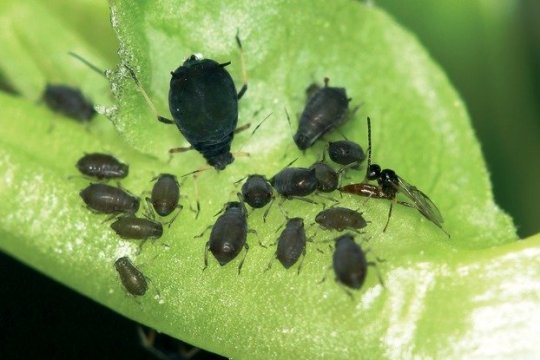
I’ve included a diagram establishing the differences between onion thrips and western-flower thrips below, which are approximately one (1) millimetre long when adults! Most notably, western-flower thrips have red ocelli and are far more hairy than onion thrips.
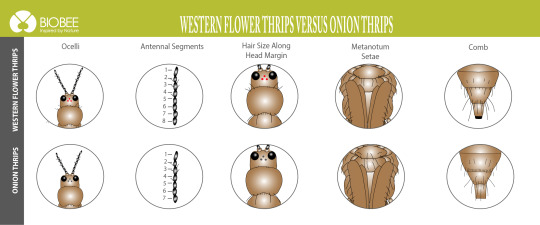
I'm always happy to chat about these summer projects or horticultural work as a whole, so if anyone has questions, please don't hesitate to ask! I'm looking forward to checking out everyone's ideas for the free prompt this week :)
Image Credits:
BIOBEE Inspired by Nature. Retrieved October 2023, from biobee-canada.com.
Vorburger, Christoph. Comparing constitutive and induced costs of symbiont-conferred resistance to parasitoids in aphids. Ecology and Evolution. Retrieved October 2023, from researchgate.net
1 note
·
View note
Text
Discovering The Enigmatic Beauty Of Trillium Recurvatum
Trillium recurvatum, commonly known as Prairie Trillium, is a captivating wildflower that graces the woodlands and prairies of North America with its unique charm and delicate beauty. In this article, we will delve into the world of Trillium recurvatum, exploring its characteristics, habitat, and the importance of preserving this remarkable native plant.
Trillium Recurvatum: An Overview:- Trillium recurvatum is a perennial herbaceous plant that belongs to the Trilliaceae family. What makes this species stand out are its striking maroon or dark red petals, which curve backward and surround the central reproductive structures. This feature is what gives it the common name "recurve trillium." Its leaves are broad and often mottled, adding to its distinctive appearance.
Habitat and Distribution:- This native wildflower is primarily found in the central and eastern regions of North America, favoring a habitat that includes deciduous forests, woodlands, and prairies. Trillium recurvatum tends to thrive in rich, moist soils and is often associated with mature forests, where it can receive dappled sunlight.
The species' range includes parts of the United States, such as Illinois, Indiana, Ohio, and Kentucky. It is also found in several Canadian provinces, including Ontario and Quebec.
The Importance of Conservation:- Like many native plants, Trillium recurvatum faces several threats to its survival. Habitat loss due to urban development and agriculture is a significant concern. Additionally, overzealous wildflower enthusiasts may unknowingly harm these delicate plants by digging them up for personal collections. This has led to local declines in some areas.
Conservation efforts are vital to ensure the continued existence of Trillium recurvatum. Plant enthusiasts, horticulturalists, and conservation organizations are working together to raise awareness about the importance of protecting native plant species like the Prairie Trillium. This includes promoting responsible wildflower viewing and discouraging the collection of plants from the wild.
Cultivation and Gardening:- For those interested in cultivating Trillium recurvatum, it's essential to do so responsibly. When acquiring plants for your garden, seek out reputable native plant nurseries that ethically propagate species rather than harvesting them from the wild.
This unique trillium can be a valuable addition to a woodland garden or naturalized area. It thrives in well-drained, humus-rich soil and prefers dappled sunlight or partial shade. When grown in the right conditions, Trillium recurvatum can reward gardeners with its elegant blooms, providing both aesthetic beauty and ecological benefits.
Trillium recurvatum, the Prairie Trillium, is a remarkable native plant that contributes to the ecological diversity of North American woodlands and prairies. Its unique appearance and habitat preferences make it a plant of interest to botanists, gardeners, and conservationists alike.
Preserving the natural habitats where Trillium recurvatum thrives and supporting responsible cultivation practices are essential steps in ensuring that this captivating species continues to grace our landscapes for generations to come. By appreciating its beauty and respecting its needs, we can play a role in the conservation of this enigmatic wildflower.
0 notes
Text
Harmonious Landscapes: Embracing the Beauty of Milton through Innovative Design
In the heart of Ontario, Canada, lies the enchanting town of Milton, known for its scenic beauty and verdant landscapes. Embracing the essence of this picturesque haven, innovative landscape designers in Milton are redefining outdoor spaces, creating harmonious landscapes that celebrate nature's gifts. Through their visionary approach and sustainable practices, these designers are transforming gardens, parks, and commercial properties into breathtaking oases. Let's embark on a journey to explore the wonders of landscape design in Milton and how it harmoniously blends nature and human creativity.

Blending Nature's Palette
Landscape designers in Milton are masterful at blending the colors, textures, and forms of nature's palette into cohesive and captivating designs. With an intimate understanding of the local flora, they curate gardens and landscapes that celebrate the beauty of native plants and showcase their unique characteristics. From vibrant wildflowers to majestic trees, these designers craft living canvases that mirror the enchanting landscapes of Milton.
Embracing Biodiversity
Milton's landscape designers are passionate advocates of biodiversity. They embrace the region's rich natural diversity, incorporating a wide variety of plant species to support local ecosystems and wildlife. By cultivating biodiverse landscapes, these designers contribute to the conservation of native species and create spaces where humans and nature can coexist harmoniously.
Sustainable Innovations
In the spirit of Milton's commitment to sustainability, landscape designers are at the forefront of eco-conscious practices. They employ innovative technologies like rainwater harvesting, drought-tolerant plants, and permeable hardscaping to conserve water and reduce environmental impact. By integrating these sustainable elements, they create landscapes that thrive without burdening precious resources.
Inviting Outdoor Living Spaces
Milton's landscape designers have an innate understanding of how outdoor spaces can enrich human lives. They create inviting environments that beckon residents to step outside and connect with nature. Whether it's a cozy patio, a serene water feature, or a welcoming pergola, these designers craft outdoor living spaces that encourage relaxation and rejuvenation amidst the splendor of Milton's landscapes.
Sculpting Urban Retreats
Beyond residential areas, landscape designers in Milton are shaping urban retreats that offer solace in the midst of bustling cityscapes. Through thoughtful urban planning and innovative design, they transform public spaces into havens for residents and visitors alike. Parks, plazas, and community gardens become inviting sanctuaries where people can escape the urban rush and immerse themselves in nature's serenity.
Conclusion
In the heart of Milton's scenic wonder, landscape designers are weaving a tapestry of artistry and sustainability. Embracing the town's natural beauty and commitment to eco-consciousness, they craft landscapes that harmoniously blend with the environment. From vibrant gardens to biodiverse habitats and inviting urban retreats, these designers are leaving their mark on the canvas of Milton's landscapes. As they continue to innovate and create, the town of Milton thrives as a shining example of how landscape design can celebrate nature's beauty and inspire harmony between humans and the natural world.
0 notes
Text
Invasive plant thriving in Southeast New Brunswick
Surrounded by tall, dense, grass-like plants, experts and conservation groups gathered in Riverview, New Brunswick on Thursday to try and raise awareness to an invasive plant species.
Phragmites, also known as European Common Reed, can be found in all three Maritime provinces, but experts say it’s particularly abundant in the Moncton – Riverview area.
“We are finding that Southeast New Brunswick generally, but the Moncton area, more specifically, really seems to be the hot spot where it’s the most abundant, and particularly these marshes along the Petitcodiac between Moncton and Riverview is kind of ground zero,” said Paula Noel, the New Brunswick program director for the Nature Conservancy of Canada.
Members from the Nature Conservancy of Canada, New Brunswick Invasive Species Council, Fundy Biosphere Region, and the Petitcodiac Watershed Alliance worked together on Thursday to try out two different techniques to kill and control the plant.
One group worked on cutting down the plant and putting a tarp over it, while another worked on physically digging it out of the ground.
“There’s just so much of it here and as people have been saying, we’re just scratching the tip of the iceberg here in trying to control these patches,” said Noel.
She says the biggest concern is the impact it can have on wetlands, something that’s already been seen in Southern Ontario and Quebec.
“It grows so thickly, it basically forms a monoculture and as you can see it’s a very tall, very thickly growing plant. Basically once it starts to grow and spread it cuts out all light to the ground and so no other plants can grow underneath it. It actually impacts the soil around it so that it inhibits other plants from growing and allows it to keep spreading outward,” she said.
Adding, “not only are you loosing all the native plants, the diversity of plants you’d expect to find in our wetlands, but it also completely changes the habitat for wildlife.”
While it’s currently a growing problem, commonly seen along trails, roads, and wetlands, Noel says she started noticing it about a decade ago.
As for why it’s spreading so rapidly right now, she says it could be two things.
“One is that with a lot of invasive species there’s sometimes just a critical tipping point where it’s around in very small amounts, but the population gets to a certain point where it just starts to spread exponentially. But the other reason could be as the climate is changing, our region is just becoming more suitable for this plant,” she explained.
The hope it to make more people aware of phragmites.
She says that if people suspect it, they can take a picture and upload it to the iNaturalist app. This will allow experts to not only identify it, but also track how wide spread it is.
While Noel says the biggest concern is wetland impact, phragmites can also cause issues on roadways by hampering sight lines and blocking municipal drains.
For the latest New Brunswick news, visit our dedicated provincial page.
from CTV News - Atlantic https://ift.tt/ZHXxiM0
0 notes